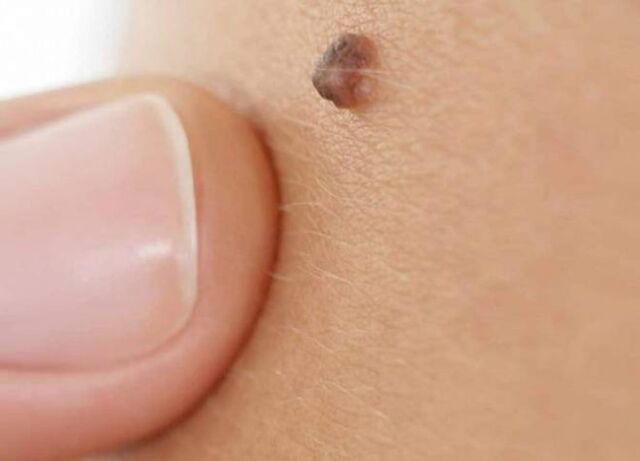Human papillomavirus is one of the most common viruses and is present in the body of 90% of the world's population. Most of its carriers were not even aware of its presence and did not find any suspicious signs in itself. That is why it has become so popular.
What is a papilloma?
Papilloma is a benign disease caused by a virus. The appearance of papillomas is caused by the activity of the human papilloma virus (HPV). On the skin, it often manifests itself in the form of cosmetic defects - warts and genital warts, in the larynx can lead to respiratory failure, and on the mucous membranes of internal organs bleeding and ulceration. There are 27 types of HPV - some are safe, others can develop into melanoma and lead to cancer.
In identification, special attention should be paid to women, as they are at high risk for cervical ectropion. Pregnant women during pregnancy are at risk of infecting their babies.
HPV is characterized by a latent (latent) process and while a person has strong immunity, the virus does not manifest itself in any way (incubation period ranges from 2 weeks to several weeks). five). Under the influence of several factors, the virus is activated, replicates and manifests clinically.

Caused by papillomavirus infection
Ways to get HPV:
- unprotected sex
- contact with the skin and mucous membranes of an infected person
- use of the wearer's personal items
- when going to public places with high humidity and crowds (swimming pools, saunas, beaches)
The most common is sexual transmission of the virus, familial routes are rarely reported, because the virus lives in the environment for a short time.
Virus activation is supported by:
- weakened immunity
- infectious diseases
- gastrointestinal discomfort
- exacerbation of chronic diseases
- pregnancy
- long-term use of certain medications (antibiotics, anticoagulants, etc. )
- smoking, alcohol abuse
- severe stress
HPV entry is facilitated by microscopic lesions, cracks, scrapes and other lesions in the skin.
Symptoms of papillomas
Symptoms depend on the site of formation and the type of HPV. The first "ringing" of the presence of the virus is externally manifested in the form of genital warts (usually appearing in intimate places) and warts (usually forming on the face, neck, limbs).
Less commonly, papillomas are accompanied by symptoms such as:
- peeling, itching, redness (skin)
- discomfort when walking (genitals)
- discharge from the nipple (milk duct)
- difficulty breathing (larynx)
- painful bowel movements
Diagnosis of papillomas
Diagnosis is made by a dermatologist, dermatologist, immunologist, or gynecologist/urologist.
- Clinical examination - visual examination and conversation with the patient.
- Instrumental and laboratory analyzes are prescribed to get a complete picture of the disease:
- General blood tests and biochemistry
- PCR (polymerase chain reaction) test - determines the type of virus and its amount in the body.
If the only treatment is to remove the papilloma, then parallel biopsy of the material to conduct cytological studies and determine the risk of cancer.
Treatments
There is no drug or method that can completely remove the HPV virus from the human body. The effects are made only on the consequences of the virus. General antiretroviral therapy is performed in cases of highly oncogenic viruses localized in the region of the genetic tract. Patients with previously diagnosed papillomatosis should be systematically tested and use barrier contraception to avoid transmitting the virus to their sexual partners.
The papilloma should be removed, because the virus in the epithelial cells causes them to multiply, forming new papillomas or existing ones will regenerate.
Depending on the location and symptoms of the papilloma, they use the following methods of removal:
- Laser surgery - papillomas are treated with a surgical laser. This method does not require hospitalization and the affected area heals quite quickly. The laser is used on the face and visible parts of the body.
- Radiosurgery is a method of non-contact exposure to high-frequency radio waves, under its influence, the tumor will be removed. This method is recognized as effective, but expensive.
- Cryodestruction - freezing the tumor with liquid nitrogen. Scars may remain at the site of exposure.
- Chemical destruction - cauteritization with chemical acids. The procedure is quite sensitive and carries a high risk of touching nearby tissues and chemical burns.
- Surgical excision - rarely used, in cases where a malignant process is suspected.
- Folk remedies - detox with folk remedies (garlic, celandine, perilla, cabbage leaves, castor oil and others)
Currently, vaccines have been developed to prevent highly carcinogenic viruses (species 16 and 18), which are used in many countries.
To prevent the disease, you should practice protective sex, use personal hygiene items, strengthen the immune system, and be regularly examined by an immunologist and gynecologist. If you develop symptoms of the HPV virus, see your doctor immediately.














































































